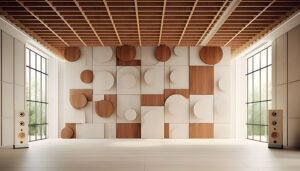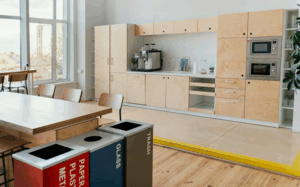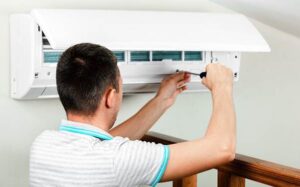Maintenance Made Easy: Tips to Keep Your Parquet Flooring Looking New

Parquet flooring has long been admired for its elegance, intricate patterns, and timeless appeal. Its geometric designs, such as herringbone, chevron, and basketweave, bring warmth and sophistication to homes, offices, and commercial spaces. However, like any wood flooring, parquet requires proper care to maintain its beauty and longevity. A few small mistakes can lead to scratches, discoloration, or even warping over time. In this blog, we’ll explore practical tips and strategies to keep your parquet flooring looking new, ensuring it remains a stunning centerpiece of your interior design.
Why Parquet Flooring Requires Special Care
Parquet flooring consists of small wooden pieces carefully arranged in decorative patterns. While these patterns create a luxurious aesthetic, they also make the flooring more susceptible to damage from dust, moisture, or improper cleaning techniques. Unlike SPC Flooring or PVC Vinyl Flooring, which are highly resistant to water and scratches, parquet is a natural material that demands attention. Factors like direct sunlight, heavy foot traffic, and furniture movement can all impact the surface if not managed correctly.
Regular Cleaning: The First Step to Longevity
Dust, dirt, and grit are major culprits that can scratch the surface of parquet flooring. Regular cleaning is the most important step to maintain its pristine appearance:
Sweeping and Vacuuming: Use a soft-bristle broom or a vacuum cleaner with a hardwood floor attachment to remove dust and debris. Avoid vacuums with beater bars, as they can scratch the wood.
Dry Mopping: Microfiber dry mops are excellent for daily maintenance, removing fine dust without applying excessive pressure on the wood.
Spot Cleaning: For spills or stains, immediately blot the area with a soft cloth. Avoid rubbing, as it can push moisture deeper into the wood and damage the finish.
By incorporating these simple routines, you can significantly reduce the risk of scratches and preserve the natural shine of your parquet flooring.
Avoid Moisture and Humidity Damage
Wood is sensitive to water, and parquet flooring is no exception. Excessive moisture can cause warping, cupping, or swelling. Here’s how to prevent water-related damage:
Wipe Spills Immediately: Accidental spills from drinks, water, or pet accidents should be cleaned promptly to prevent staining and water damage.
Use Damp, Not Wet, Mops: When mopping, use a slightly damp mop rather than soaking the floor. Avoid steam mops, as high heat can compromise the wood.
Control Humidity Levels: Maintain indoor humidity between 40–60% to prevent expansion and contraction of the wood. Using a humidifier or dehumidifier can help stabilize the environment.
Protect Parquet from Scratches and Dents
Parquet flooring can be scratched or dented by furniture, pet claws, or high heels. Protecting the surface ensures it remains flawless for years:
Furniture Pads: Attach felt pads to the legs of chairs, tables, and sofas to reduce friction and prevent scratching.
Area Rugs and Runners: Place rugs in high-traffic areas, near entrances, or under heavy furniture to minimize wear.
Pet Care: Trim your pets’ nails regularly to prevent accidental scratches.
Sunlight Protection
Direct sunlight can fade parquet flooring over time, leading to uneven coloration. Protect your floors with these strategies:
Use Curtains or Blinds: Install Smart Curtains or Sheer Curtains to filter sunlight while maintaining natural light.
UV-Resistant Finishes: Many modern parquet flooring options come with UV-resistant coatings that slow down fading.
Rotate Rugs and Furniture: Changing the position of rugs or furniture periodically ensures even exposure and prevents discoloration patterns.
Polishing and Refinishing
Polishing parquet flooring enhances its natural shine while adding a layer of protection. However, it’s important to follow manufacturer guidelines and avoid harsh chemicals. For older or heavily worn floors, consider professional refinishing:
Polishing: Use products specifically designed for wood floors to restore luster. Avoid waxes not meant for parquet, as they can build up and damage the finish.
Refinishing: Over time, parquet may require sanding and reapplying a protective finish. Professional refinishing restores the original beauty while ensuring durability.
Regular maintenance, combined with occasional professional care, can make your parquet flooring look brand new for decades.
Combining Parquet Flooring with Other Flooring Types
For areas prone to moisture or heavy wear, combining parquet with other flooring types can be effective:
SPC Flooring: Use in kitchens or bathrooms, where water resistance is essential.
Rubber Flooring: Ideal for gyms or play areas, offering shock absorption and durability.
PVC Vinyl Flooring: Perfect for utility spaces or high-traffic areas due to its resilience and easy cleaning.
Raised Flooring: In offices or data centers, raised flooring can protect parquet from underlying infrastructure while adding functional benefits.
This approach allows you to enjoy the elegance Vinyl Flooring of parquet in living areas while using practical alternatives in more demanding spaces.
Final Thoughts
Maintaining Parquet Flooring doesn’t have to be complicated. By following simple steps—regular cleaning, controlling moisture, protecting from scratches, limiting sunlight exposure, and occasional polishing—you can preserve its beauty and longevity. Pairing parquet with complementary flooring types like SPC Flooring, Rubber Flooring, PVC Vinyl Flooring, or Raised Flooring in functional areas ensures a harmonious, practical, and stylish home or office environment.
With the right care, parquet flooring remains a timeless investment, combining elegance, warmth, and durability, while enhancing the aesthetic appeal of any interior.







